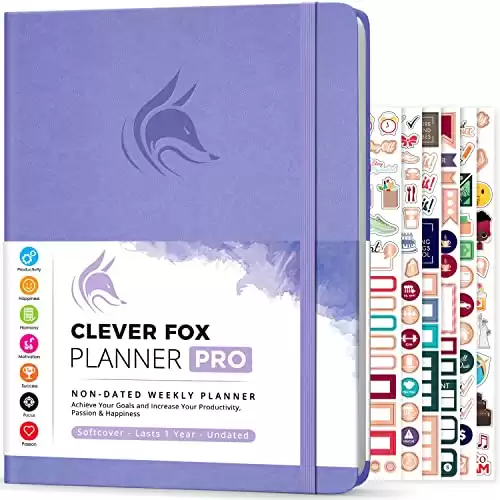Quick Disclosure - This post may contain affiliate links, which means I may receive a commission (at no extra cost to you) if you click the link and make a purchase. Please read my disclaimer policy for more information.
Achieve Your Goal of Writing a Book
This is the year you will achieve your life goal of writing a book! I can feel it.
I was in your shoes not too long ago. I had a story idea that I knew people would love if only I could turn it into a novel. I was excited to write the first draft. I bought writing books on the craft, took courses, and attended conferences.
But years went by, and I never quite finished the draft. After a while, my family and friends stopped asking me about my book.
I’m glad they did because after all those years trying to write the book, all I had to show for it were notes and half-finished scenes.
For a time, I stopped writing entirely and put my dreams away in a drawer to collect dust along with my unfinished scenes.
But that voice inside my head never stopped reminding me how much I loved writing. I was also working a job I didn’t enjoy, which was a daily reminder that I needed to write the book.
I was meant to be a writer, and it was time to make it happen. Finally!
But I had to take a different approach if I was to succeed this time around. I had to get clear on my writing goals and create a roadmap to take me to the finish line.
That’s where goal setting came into play. What I will share in this post is more than just putting a goal on your calendar.
I will walk you through how to set a specific goal that will become an action plan for success.
These are the steps I followed to take my story idea and turn it into a final draft in just a few months (not years).
Yes, I finally wrote my novel. It’s still the first draft, but a pretty good first draft ready for edits.
If you’re ready to achieve your goal of writing a book, keep reading for the goal-setting method that works.
SMART Goals for Writers
Not all goals are created equal. To achieve your life goal of writing a book, you must set a SMART goal. SMART stands for Specific, Measurable, Achievable, Relevant, and Time-Bound.
Specific
Your goal has to be specific enough to create action steps to achieve it. It’s not enough for you to say that you want to write a novel. Instead, a specific goal would be to write a 99,000-word first draft of your YA fiction novel by August 2023.
Measurable
Writing a 99,000-word draft is Measurable because we know that once you hit 99,000 words, you are done.
Achievable
The goal is Achievable because it’s realistic. You likely have the resources to work on your book, like a computer, writing books, and a story idea.
Reasonable
Also, the word count is reasonable. For example, if you want to write the first draft in 3 months (after completing your prep work), you can break down your word count goal into 33,000 words per month, 8250 words each week, or 1179 words each day.
Writing 1179 words per day is reasonable for new writers. If you have a busy schedule, you can extend the drafting phase to 4 or 6 months.
Relevant
If you are an aspiring YA fiction writer, our example goal is relevant because you are writing a first draft that is YA and within the word count parameters of most YA fiction novels.
Time-bound
Lastly, the goal is time-bound because our deadline is August 2023. A deadline creates a sense of urgency that pushes you to work daily.
Writing a 99,000-word first draft of a YA fiction novel by August 2023 is a Specific, Measurable, Achievable, Relevant, and Time-bound goal.
Keep Your Goal Top of Mind
Now that you have a SMART goal, you need to keep it top of mind. You need to remind yourself daily of what you’re working towards.
I recommend you review your goal each day before working on your novel.
For my goal, I created a Google doc and included my SMART goal as part of my Life Map. I learned the concept of a Life Map from Demir Bently, a productivity coach. His Winning the Week formula is my secret sauce to planning a productive calendar week after week.
A Life Map is a blueprint of your goal that includes your life vision, SMART goal, and action steps that will lead to achieving your goal.
Every day before writing, I open my Life Map and review my SMART goal and action steps. This helps me see what I am working towards and my progress. In the video below, Demir calls the Life Map a success list. Check it out!
Break Down Your Goal Into Steps
To achieve your goal, you must break it down into actionable steps. In other words, you want to create mini-goals on your way to your big goal.
I create mini-goals by breaking my steps into monthly, weekly, and daily goals.
Using our example of writing a 99,000-word first draft of a YA fiction novel by August 2023, the actionable steps could be the following:
Step 1 – Read a good writing book to learn (or brush up) on plot, character, and setting
Step 2 – Create characters
Step 3 – Brainstorm setting
Step 4 – Create a story beat sheet
Step 5 – Expand the beat sheet with scene summaries
Step 6 – Write the first draft
Let’s turn our action steps into mini-monthly, weekly, and daily goals.
January – Read all 15 Chapters of Save the Cat by Jessica Brody
I’m assuming you are a new writer (like I was not too long ago) who is still learning all about plot, character, and setting. If so, I highly recommend reading a good writing book like Save the Cat! Writes A Novel.
If you are working on a YA novel, check out Save the Cat! Writes a Young Adult Novel.
I spent a year going in circles trying to plot out my story idea and turn it into a viable draft. I failed miserably until I learned the Save the Cat method.
Jessica Brody does a great job walking you through the concept and helping you create a beat sheet of your plot. For me, the plot of my story practically wrote itself once I learned how story beats work.
A SMART goal for January could be to read all 15 chapters of Save the Cat by January 31. This means you read 3 to 4 chapters per week and about half a chapter to a chapter per day.
Totally doable, right?
February – Create my Hero and Antagonist
You can focus on creating your main characters in February, like the Hero and Antagonist.
The SMART goal could be to create the backstory and complete character sheets for the Hero and Antoganist by February 28.
Your weekly goal could be to complete one character sheet and one backstory per week.
Your daily goal could be how many hours you spend each day working on the character sheet and backstory.
Adjust the hours as needed so you meet your weekly goal.
March – Create the World and Setting
You can dedicate the month of March to world-building and setting. The number of worlds and settings will vary by story.
Your weekly goal could be to create two settings per week. Your daily goal could be how many hours you spend working on your worlds and setting.
April – Plot out the Beat Sheet of the Novel
If you are following the Save the Cat Method, then April can be dedicated to plotting out the beat sheet of the novel.
There are 15 beats in the Save the Cat method, so the mini SMART goal could be to plot 15 beats by April 30. This means you plot 3 to 4 beats weekly, one beat each day.
This gives you ample time to think and brainstorm the plot of your novel.
May – Expand the Story Outline by Creating Scene Summaries.
With your beat sheet complete, you can expand your story by creating summaries of your beats and writing connecting scenes.
You won’t know how many scenes you will need, and that’s okay! Just estimate. You can start by figuring out how many scenes you need to connect beats.
A SMART goal for May could be to draft scene summaries for your 15 beats by May 31. This means you draft scene summaries for 3 to 4 beats per week and about half a scene to a full scene summary per day.
Your SMART mini-goal may vary depending on your story and scenes. Just play around with the number of scenes and set a goal.
June, July, and August – Write the First Draft.
Here’s the exciting part. With all your prep work done, it’s time to start writing the first draft.
Keep in mind that the first draft is never pretty, so put away your editing hat. You will write for the next three months without listening to the internal editor. The faster you can draft, the better. The goal is just to get the first draft written.
In our example, we are working on a 99,0000-word first draft by August 2023. A SMART goal for June, July, and August is to write 33,000 words by the end of each month.
This means that weekly you write about 8250 words or 1178 words each day (if writing seven days per week).
Calendar Your Action Steps
If you don’t write tasks in your calendar, they will not happen.
Once you break down your goal, add each monthly, weekly, and daily goal to your calendar.
This step is especially important for your daily tasks. For example, calendar when will you spend the 1 or 2 hours working on your beats.
I am a big fan of Google Calendar, which I still use for personal and family events, but I recently started to calendar my writing goals using the Clever Fox planner.
The planner allows me to set goals and track my mini-goals and daily action steps. It also provides a space to review my progress, an important part of achieving a goal.
Clever Fox has planners for just about everything, including a planner to create a whole life plan, but I’m not quite there yet.
I’m just focused on editing my first draft, so the weekly planner does the trick.
Long story short, I use a planner for each major SMART goal.
Review Your Progress
Life happens, and to ensure we stay on track, we must review our progress, reflect and adjust when necessary.
Each day look at your tasks and see if you completed them as planned. If not, what can you do to ensure the tasks get done. Do you need to adjust your schedule? Do you need to reduce the number of daily tasks?
To review your progress, choose a time each week to look at your work for the past seven days. Did you reach your weekly goal? If not, how can you adjust your daily tasks?
Similarly, set a monthly date to check your bigger goals and see if you’re on track.
Additional Goal-Setting Tips
Reward Yourself
Setting a goal and working each day to accomplish it is hard work. That’s why it’s so important to reward yourself for your effort.
You should reward yourself daily, weekly, and monthly as you accomplish your mini-goals. The rewards could be as simple as going out to dinner at your favorite restaurant each month.
Weekly you can treat yourself to a home spa day where you pamper yourself. Daily you can treat yourself by watching your favorite show at the end of a productive writing day.
The point is for you to find something you enjoy and reward yourself.
Find an Accountability Partner
We all know about critique partners who give us feedback on our writing. How about finding a partner to set goals and hold each other accountable? This could be your critique partner, and you can set writing goals together.
Create a Positive Mindset
Our actions are determined by what we are thinking. Many of us take the first step to writing a book because we have a story idea and believe others will enjoy it.
However, if we think writing the novel is hard or don’t have time, we procrastinate and never finish the first draft.
Instead of believing writing a novel is hard, why not believe:
- Writing gets easier with practice
- Any task seems hard until you do it
- I have access to writing resources to make it easier to write a novel.
You get the idea. Take some time to work on your mindset, and you will see the results in your writing.
To learn more about creating a strong mindset for writing success, check out Master Your Mindset and Become a Successful Author.
Establish a Daily Routine.
Consistency is how you accomplish a goal. Nothing creates consistency more than a daily writing routine.
The good news is that our brains like routines. When your brain knows you sit down each day at 6:00 am to write, the process becomes easier and takes less effort.
Set Goals and Crush Them: Finally Write A Novel This Year
I spent over a decade wanting to write a novel. I would start the process but never finish the first draft.
What finally helped me get to the finish line was to set a SMART goal and break it down into manageable and actionable mini-goals. I created a road map for myself that I could follow monthly, weekly, and daily.
Now I’m applying everything I’ve shared in this post to editing my novel, and it feels amazing to start making progress toward becoming a published author.
You can set a SMART goal and finally write your novel too!
Keep me posted on your progress by returning and leaving me an update in the comments.
Related Articles on How to Achieve Your Goal to Write a Book
- How to Write a Novel in 90 Days
- Master Your Mindset and Become a Successful Author
- 6 Tips for Writing a Novel with a Full-Time Job




